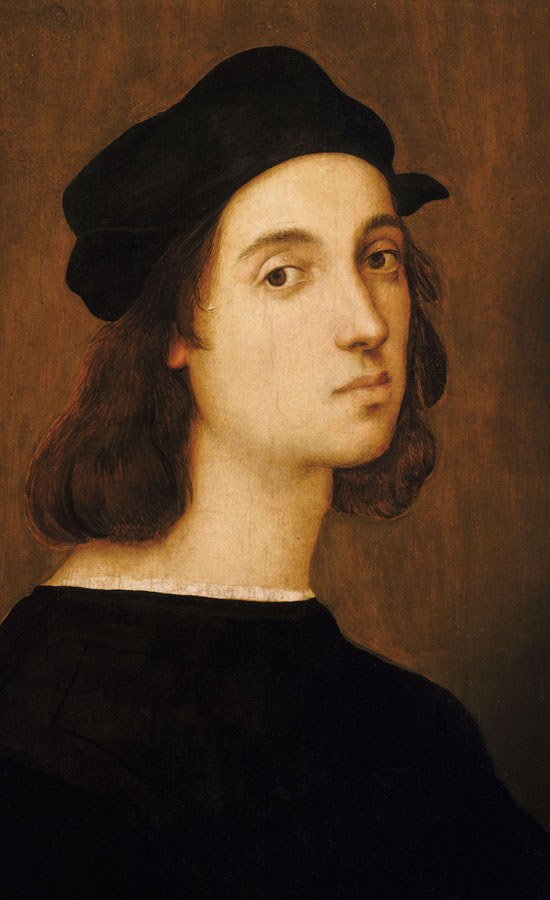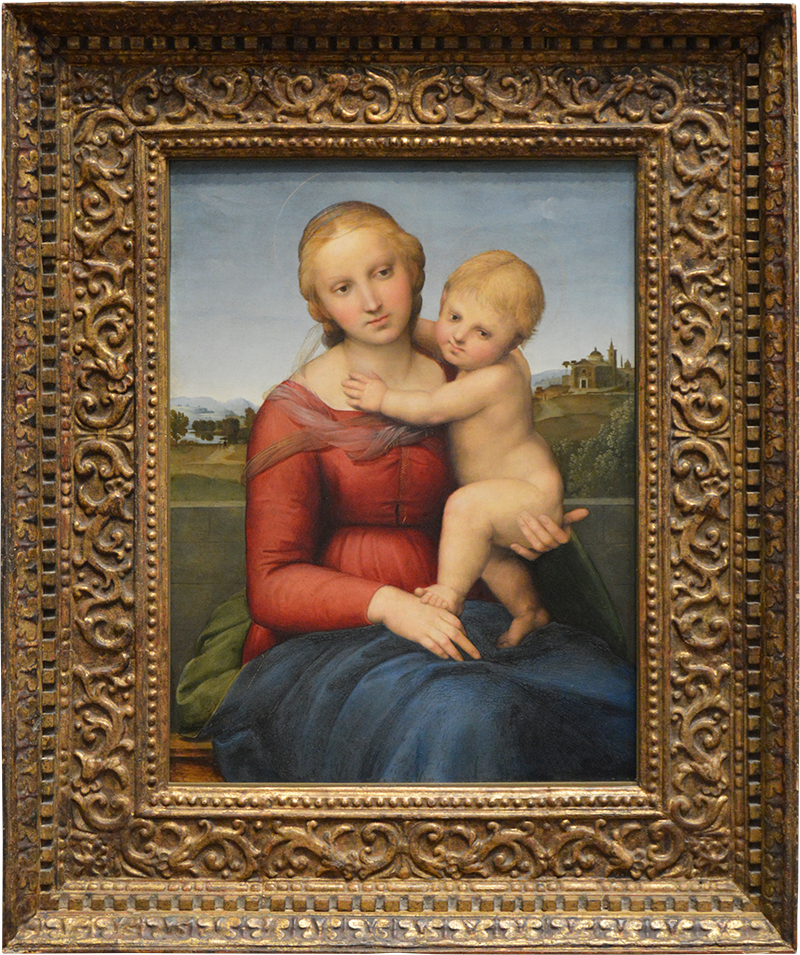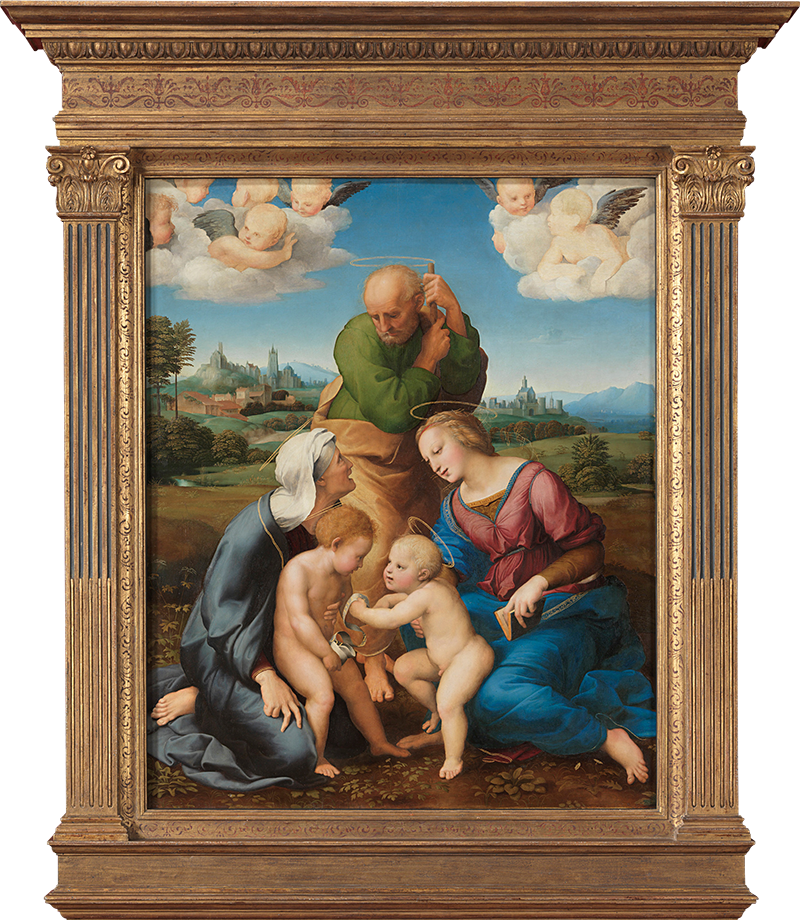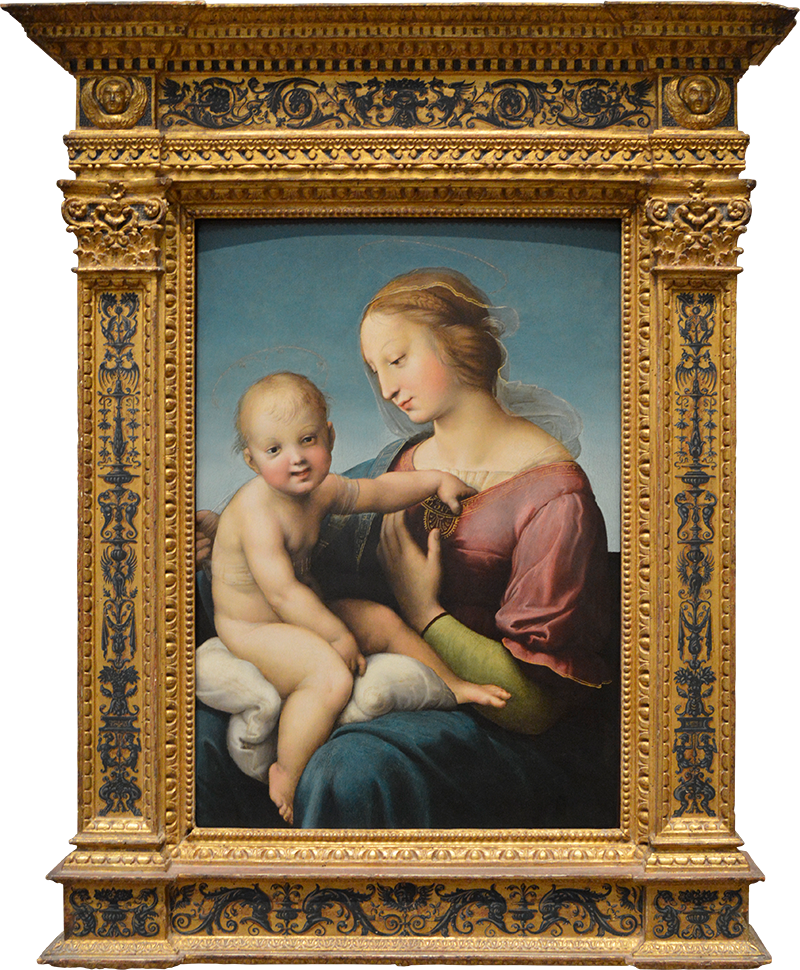Canigiani Holy Family
1508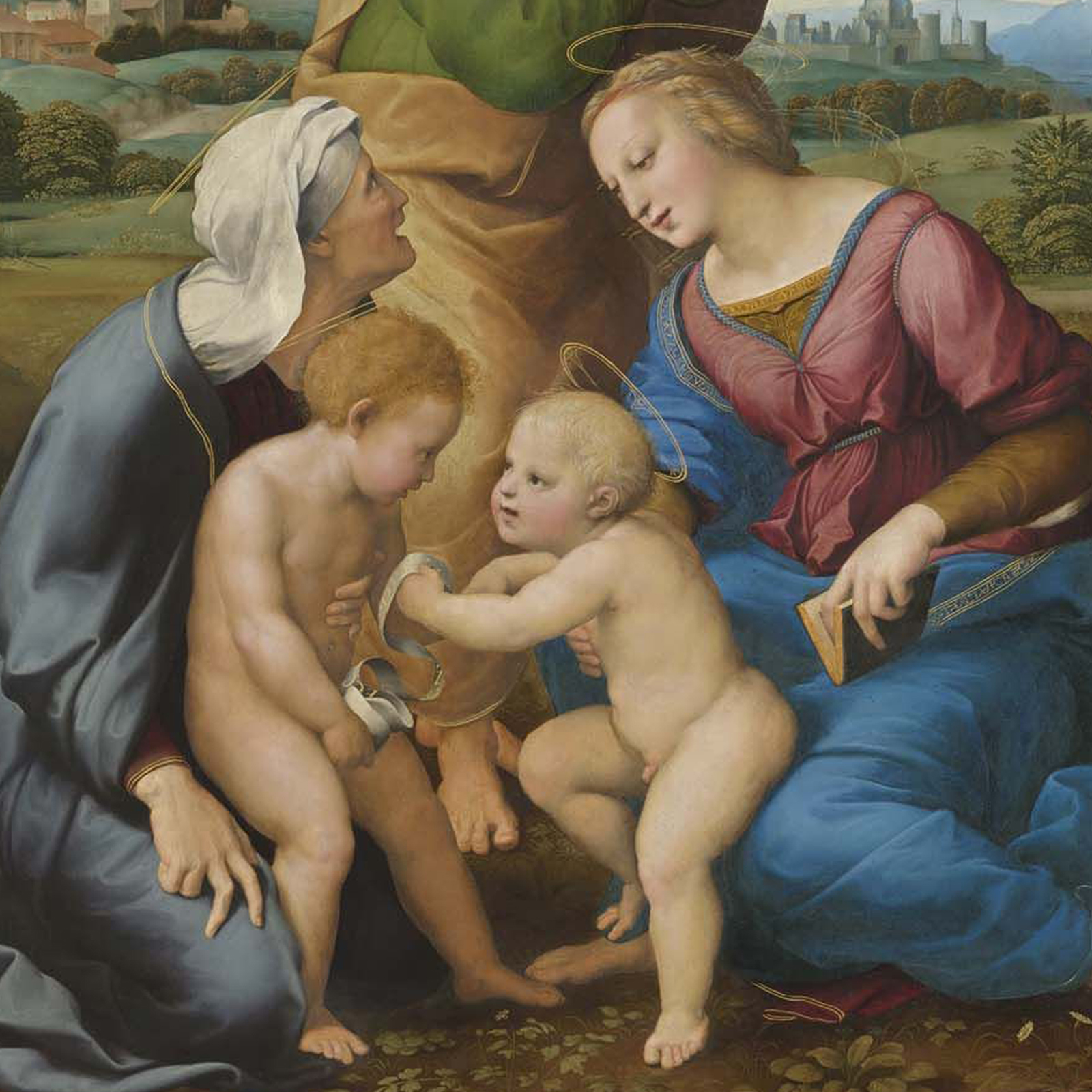

Baldini, Nicoletta. Raphael. New York, Rizzoli International Publications, Inc., 2005. Print. p110
It was from the heirs of Domenico Canigiani, who commissioned the work from Raphael, that this painting arrived in the Medici collections in 1588. In 1691 the daughter of Grand Duke Cosimo III de’ Medici, Anna Maria Luisa, took the painting with her when she married the Elector Palatine Johann Wilhelm. It was first destined for the gallery in Düsseldorf but was transferred to Munich in the early Ottocento.
Set in an open landscape with views of towns, we see the Virgin and Saint Elizabeth seated on the ground in the foreground holding Jesus and his cousin John on their knees while they play with a scroll. Behind the group, Joseph stands, resting on a staff and facing Elizabeth. A choir of angels looks down on the Holy Family though they were only discovered recently beneath layers of paint that had been added during the time the painting was held in Düsseldorf.
Signed “Raphael Urbinas” on the neck of the Virgin’s dress, the painting was seen by Giorgio Vasari in the house of the descendants of Domenico Canigiani, a rich Florentine merchant, for whom it may have been painted to celebrate his marriage in 1507 to Lucrezia Frescobaldi. In any case, it would have been executed toward the end of Raphael’s stay in Florence, either in 1507 or 1508. The particularly elaborate schema concludes the series of studies of groups of the Madonna and Christ child and saint that Raphael undertook during his period in Tuscany (1504-1508), and demonstrates how he had assimilated the lessons to be learned from Leonardo and Michelangelo. From the former he used the pyramidal structure to form the group, from the latter the figure of Saint Joseph. By this time Raphael had mastered their artistic language and that of other painters that had influenced his training, and used it to develop the signs of affection and intimacy that existed between the figures.
- 107 cm x 131 cm
- Alte Pinakothek
- Munich
- Oil on Wood
